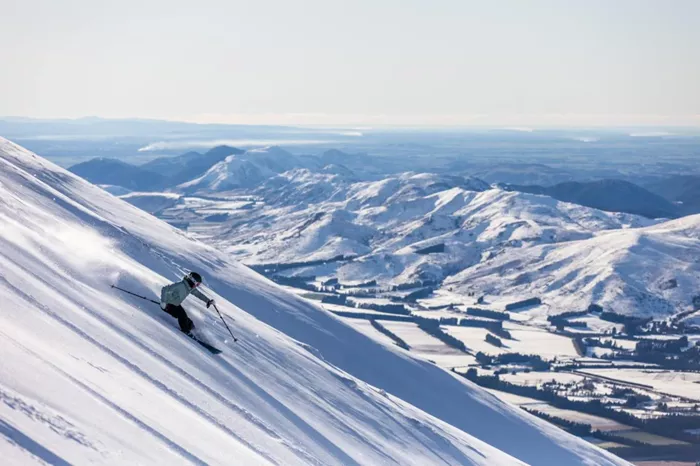Friction plays a crucial role in the performance of extreme sports such as sledding and skiing. It is the force that opposes the motion of two surfaces sliding against each other, and understanding how it is generated can significantly enhance the experience of athletes and enthusiasts alike. This article delves into the fundamentals of friction, its implications in sledding and skiing, and the factors that influence it.
What Is Friction?
Friction is a force that resists the relative motion of solid surfaces, fluid layers, and material elements sliding against each other. It arises from the interactions between the microscopic irregularities on surfaces in contact.
There are two main types of friction relevant to sledding and skiing:
Static Friction: This is the friction that exists between two surfaces that are not moving relative to each other. It must be overcome for an object to start moving.
Kinetic (or Dynamic) Friction: This occurs between surfaces in relative motion. It is typically less than static friction, which means it is easier to keep an object moving than to start its motion.
The Role of Friction in Sledding And Skiing
In both sledding and skiing, friction affects speed, control, and safety. Here’s how:
Speed Control: Friction can either slow down or stabilize a sled or ski. High friction can lead to slower speeds, while low friction allows for faster descents.
Directional Control: Skiers and sledders rely on friction to steer. By shifting their weight or angling their equipment, they can manipulate friction to change direction.
Safety: Understanding friction helps athletes maintain control over their equipment, reducing the risk of accidents.
Generating Friction
Friction is generated through several mechanisms:
1. Surface Roughness: The microscopic texture of the surfaces in contact affects how much friction is generated. Rougher surfaces tend to create more friction due to increased interlocking between surface irregularities.
2. Material Properties: Different materials have distinct coefficients of friction. For example, skis made from certain types of plastic may glide more smoothly over snow compared to others.
3. Weight Distribution: The amount of weight on a sled or ski influences the normal force, which directly impacts the amount of friction generated. More weight typically increases friction.
4. Environmental Factors: Conditions such as snow type (powder vs. packed snow), temperature, and moisture can alter the characteristics of both the surface and the equipment, thereby affecting friction levels.
The Physics Behind Friction
The fundamental equation governing friction is given by:
Ff=μ⋅FnFf=μ⋅Fn
Where:
FfFf = force of friction
μμ = coefficient of friction (depends on materials)
FnFn = normal force (the perpendicular force exerted by a surface)
In sledding and skiing:
The coefficient of kinetic friction (μkμk) is usually lower than that of static friction (μsμs). This means that once a skier or sledder starts moving, it requires less force to keep moving than to start moving from rest.
Factors Affecting Friction in Sleds
1. Surface Material
The material used for sled bases significantly influences performance:
Plastic Sleds: Generally have lower coefficients of friction on snow due to their smooth surfaces.
Metal Sleds: Can provide better control but may generate higher friction depending on their polish and treatment.
2. Design Features
Sled design also impacts how friction is managed:
Bottom Shape: A rounded bottom reduces contact area with snow, thus lowering friction.
Skis or Runners: Some sleds feature skis or runners that are designed specifically to minimize drag.
3. Snow Conditions
The type of snow plays a significant role:
Powder Snow: Offers less resistance initially but can create drag as it compacts under weight.
Wet Snow: Increases drag due to higher moisture content which enhances adhesion.
Factors Affecting Friction in Skis
1. Ski Base Material
The base material affects glide:
P-Tex: A common base material for skis that allows for smooth gliding while maintaining durability.
Graphite Additives: Some skis incorporate graphite to reduce static cling and enhance glide.
2. Waxing
Ski waxing alters surface properties:
Different waxes are used for varying temperatures and snow conditions to optimize glide by reducing surface tension and increasing speed.
3. Edge Angle
The angle at which skis contact the snow influences control:
Sharper edges provide better grip but increase friction when turning.
Optimizing Performance Through Understanding Friction
Athletes can optimize their performance by understanding how to manipulate these factors:
1. Choosing Equipment Wisely: Selecting sleds or skis with appropriate materials based on conditions can enhance performance.
2. Regular Maintenance: Keeping bases clean and well-waxed ensures optimal glide.
3. Adapting Techniques: Learning how weight distribution affects speed and control can help athletes maneuver more effectively.
Conclusion
Friction is a fundamental aspect that influences the dynamics of sledding and skiing. By grasping its principles—how it is generated, its implications on speed and control, and how various factors affect it—enthusiasts can enhance their experience in these thrilling sports.
Whether it’s selecting the right equipment or mastering techniques to manage speed and direction, understanding friction empowers athletes to excel on slopes worldwide.This knowledge not only contributes to better performance but also enhances safety by allowing athletes to predict how their equipment will behave under different conditions.
Related topics:
- Which Utah Ski Resorts Have Night Skiing?
- Why Are There Grooves in Cross Country Skiing
- Where Is Cross Country Skiing Most Popular?

